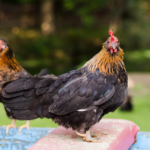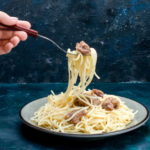Summer sausage is more than just a delicious cured meat; it embodies tradition, craftsmanship, and a rich history that spans cultures and centuries. Known for its distinct flavor, versatility, and ability to be enjoyed year-round, summer sausage has become a staple in many households, especially in the United States and Europe. This extensive exploration delves into the origins, production processes, types, cultural significance, and modern trends surrounding summer sausage, revealing the depth of this beloved delicacy.
I. Historical Background
1.1 Origins of Summer Sausage
The origins of summer sausage’s can be traced back to ancient civilizations, where the need to preserve meat for extended periods led to the development of various curing techniques. Early forms of preserved meats were essential for survival, particularly in regions with harsh winters or limited access to fresh food.
In Europe, particularly Germany and other parts of Central Europe, the practice of making summer sausage’s dates back several centuries. German immigrants brought their traditional sausage-making techniques to America in the 19th century, where summer sausage became popular in various regions, particularly the Midwest. The term “summer sausage” is believed to have originated from the fact that these sausages could be made and consumed during the warmer months, as the curing process allowed them to be stored without refrigeration.
1.2 The Evolution of Summer Sausage
As summer sausage’s made its way across different regions, it adapted to local tastes and available ingredients. In the United States, it evolved into a diverse array of styles, influenced by regional preferences and culinary traditions. In many cases, summer sausage was made with whatever meats were readily available, including beef, pork, venison, and other game meats.
In the early 20th century, the advent of refrigeration and modern food processing techniques revolutionized sausage production. This led to the mass production of summer sausage, making it more accessible to consumers while retaining its traditional characteristics. Despite industrialization, artisanal and small-batch production methods have continued to thrive, preserving the craft of sausage-making.
II. The Production Process
2.1 Ingredients
The primary ingredients of summer sausage typically include:
- Meat: The main component can vary, with beef and pork being the most common choices. Other meats, such as venison or wild game, may also be used, particularly in regional or artisanal varieties.
- Fat: Fat adds moisture and flavor to the sausage. The fat content is crucial for achieving the desired texture and mouthfeel.
- Spices and Seasonings: A blend of spices enhances the flavor of summer sausage’s. Common spices include black pepper, garlic, coriander, and mustard seeds. Additional flavorings, such as wine or mustard, may also be included.
- Curing Agents: Curing salts, such as sodium nitrite, are used to preserve the sausage, impart color, and inhibit the growth of harmful bacteria.
2.2 The Sausage-Making Process
The production of summer sausage involves several key steps:
- Meat Preparation: The chosen meat is trimmed, ground, and mixed with fat. The ratio of meat to fat is crucial for achieving the right balance of flavor and texture.
- Mixing Ingredients: The ground meat and fat are blended with spices, seasonings, and curing agents. This mixture is typically allowed to rest for several hours or overnight, allowing the flavors to meld.
- Stuffing: The prepared mixture is stuffed into casings, usually made from collagen or natural animal intestines. The casings must be tightly packed to prevent air pockets, which can affect the sausage’s texture.
- Fermentation: Summer sausage is often fermented, which helps develop its characteristic tangy flavor. This process involves allowing the sausage to rest at a controlled temperature and humidity level for a specific period, encouraging the growth of beneficial bacteria.
- Smoking: After fermentation, the sausages are smoked, imparting additional flavor and aiding in preservation. The smoking process can vary in duration and type of wood used, influencing the final taste.
- Cooking: Following smoking, summer sausages are typically cooked to a specific internal temperature, ensuring they are safe to eat and have a desirable texture.
- Cooling and Packaging: Once cooked, the sausages are cooled, sliced, and packaged for sale or storage. Many producers also vacuum seal their products to enhance shelf life.
2.3 Safety Considerations
The production of summer sausage must adhere to strict safety standards to ensure consumer safety. Key safety measures include:
- Temperature Control: Maintaining proper temperatures during the curing, fermentation, and cooking processes is crucial to prevent bacterial growth.
- Curing Agents: The use of approved curing agents, such as sodium nitrite, helps inhibit harmful bacteria while ensuring the sausage develops its characteristic color and flavor.
- Cleanliness: Strict hygiene practices must be followed throughout the production process to prevent contamination.
III. Types of Summer Sausage
3.1 Traditional Summer Sausage
Traditional summer sausage’s, often associated with German and Eastern European cuisines, is characterized by its rich flavor and coarse texture. Common varieties include:
- German Summer Sausage: Typically made with a combination of beef and pork, seasoned with spices like garlic and black pepper, and smoked for added depth.
- Polish Kielbasa: A type of summer sausage known for its garlicky flavor and blend of spices, often enjoyed grilled or in various dishes.
3.2 Regional Varieties
Summer sausage varies significantly across different regions of the United States, with unique flavors and ingredients reflecting local culinary traditions:
- Wisconsin Summer Sausage: Known for its high fat content and mild flavor, often made with a blend of beef and pork. Wisconsin is renowned for its cheese and sausage production, making it a key player in the summer sausage market.
- Midwestern Venison Summer Sausage: In states with a strong hunting culture, venison is commonly used to make summer sausage. The use of game meat gives it a distinctive flavor profile, often enhanced with spices like juniper berries.
- Texas-Style Summer Sausage: Often spicier than its northern counterparts, Texas summer sausage may include additional heat from peppers and other spices, reflecting the state’s bold culinary traditions.
3.3 Gourmet and Artisanal Varieties
In recent years, the popularity of gourmet and artisanal summer sausages has surged. These varieties often feature unique ingredients and flavor combinations, appealing to consumers seeking high-quality, handcrafted products. Some examples include:
- Craft Beer-Infused Summer Sausage: Incorporating local craft beers into the sausage mixture adds complexity and depth of flavor.
- Herbed and Spiced Varieties: Summer sausages infused with fresh herbs, smoked paprika, or other spices offer a gourmet twist on the classic recipe.
IV. Cultural Significance
4.1 Summer Sausage in Celebrations and Traditions
Summer sausage holds cultural significance in various celebrations and traditions. In many households, it is a staple during holiday gatherings, picnics, and barbecues. Its portability and long shelf life make it an ideal choice for outdoor events and road trips.
In German and Eastern European cultures, summer sausage is often featured on charcuterie boards, alongside cheeses, pickles, and bread. It plays a central role in communal meals and festivities, fostering a sense of togetherness and celebration.
4.2 Summer Sausage and Regional Identity
In the United States, summer sausage’s has become a symbol of regional identity, particularly in states with strong meat-processing traditions. Many local producers take pride in their unique recipes and craftsmanship, contributing to the cultural tapestry of American cuisine.
Regions with a rich history of sausage-making, such as the Midwest, often celebrate their culinary heritage through festivals and events focused on meat products. These gatherings provide an opportunity for producers and consumers to connect and appreciate the artistry of sausage-making.
4.3 Culinary Pairings
Summer sausage’s versatility extends to culinary pairings. It can be enjoyed in various ways, including:
- Charcuterie Boards: Sliced summer sausage is a popular addition to charcuterie boards, complemented by a variety of cheeses, olives, nuts, and spreads.
- Sandwiches: Summer sausage makes a hearty filling for sandwiches, often paired with mustard, cheese, and fresh vegetables.
- Appetizers: Served with crackers or bread, summer sausage can be a delicious appetizer for gatherings and parties.
V. Modern Trends
5.1 Health and Nutrition
As consumers become increasingly health-conscious, the demand for leaner and healthier meat options has risen. Many producers have responded by creating lower-fat varieties of summer sausage’s or offering products made from grass-fed beef or free-range pork. Additionally, there is a growing trend towards using natural and organic ingredients, appealing to consumers seeking clean-label products.
5.2 Craft and Small-Batch Production
The craft food movement has influenced the summer sausage’s market, leading to a resurgence in small-batch production. Artisanal producers focus on traditional methods and high-quality ingredients, often sourcing locally and prioritizing sustainability. This trend has garnered a dedicated following among consumers who appreciate the craftsmanship and unique flavors of these products.
5.3 Online Sales and Marketing
The rise of e-commerce has transformed how consumers purchase summer sausage’s. Many producers now offer their products online, allowing consumers to explore a wider range of options and order directly from the source. Social media marketing has also played a significant role in promoting summer sausage, with producers showcasing their products and connecting with consumers through platforms like Instagram and Facebook.
5.4 Fusion Flavors and Global Influences
As culinary boundaries continue to blur, summer sausage has experienced an infusion of global flavors. Producers are experimenting with spices and ingredients from various cuisines, leading to unique flavor profiles that appeal to diverse palates. From spicy chipotle-infused summer sausage to Mediterranean-inspired varieties with olives and feta, these innovative products reflect a modern approach to this classic delicacy.
VI. Conclusion
Summer sausage’s is a culinary treasure that bridges history, culture, and modern innovation. From its ancient roots in preservation techniques to its current status as a beloved delicacy, summer sausage’s has stood the test of time. Its diverse range of flavors and regional variations highlight the artistry of sausage-making and the importance of culinary traditions.
As consumers increasingly seek high-quality, artisanal products, summer sausage’s will continue to evolve while retaining its core identity. Whether enjoyed as part of a festive gathering, on a charcuterie board, or as a satisfying snack, summer sausage’s remains a cherished symbol of flavor, craftsmanship, and cultural heritage.







